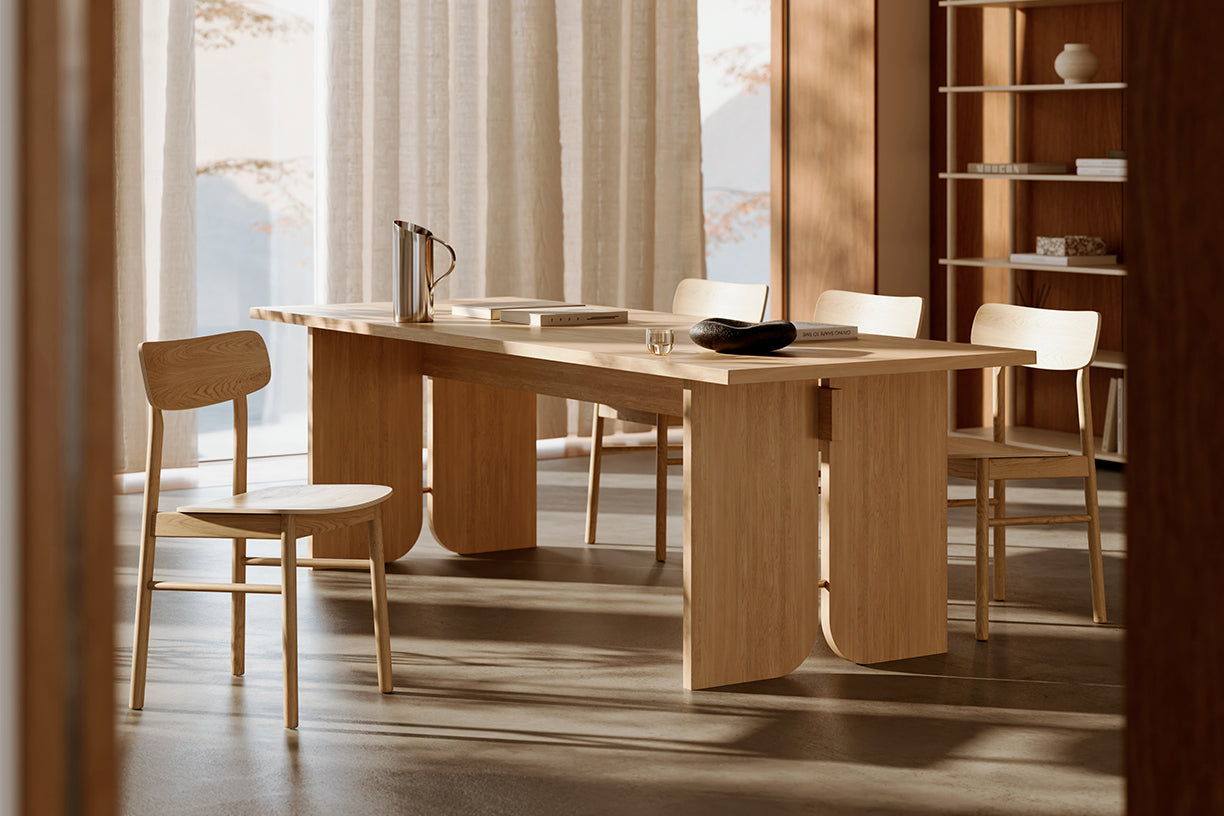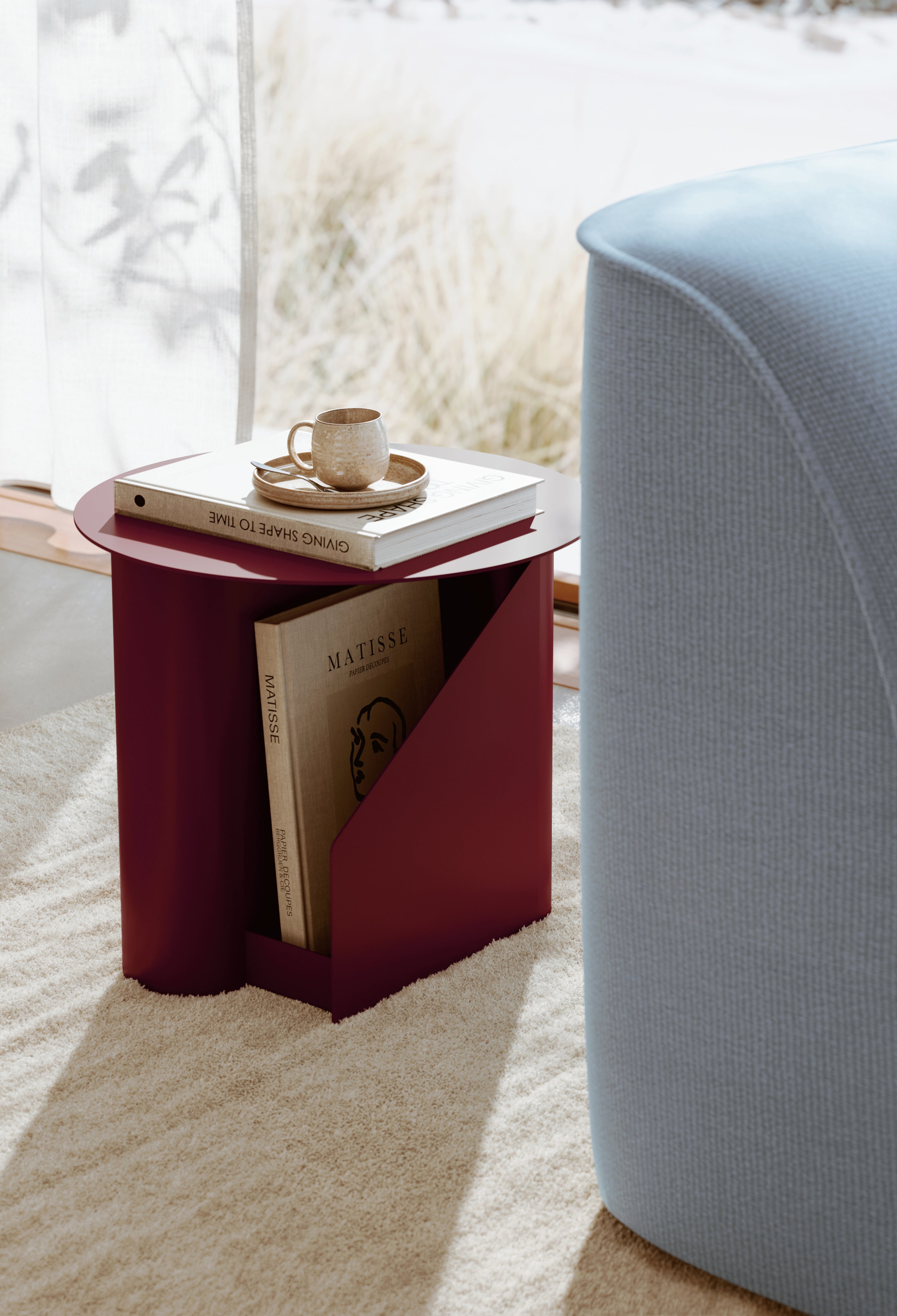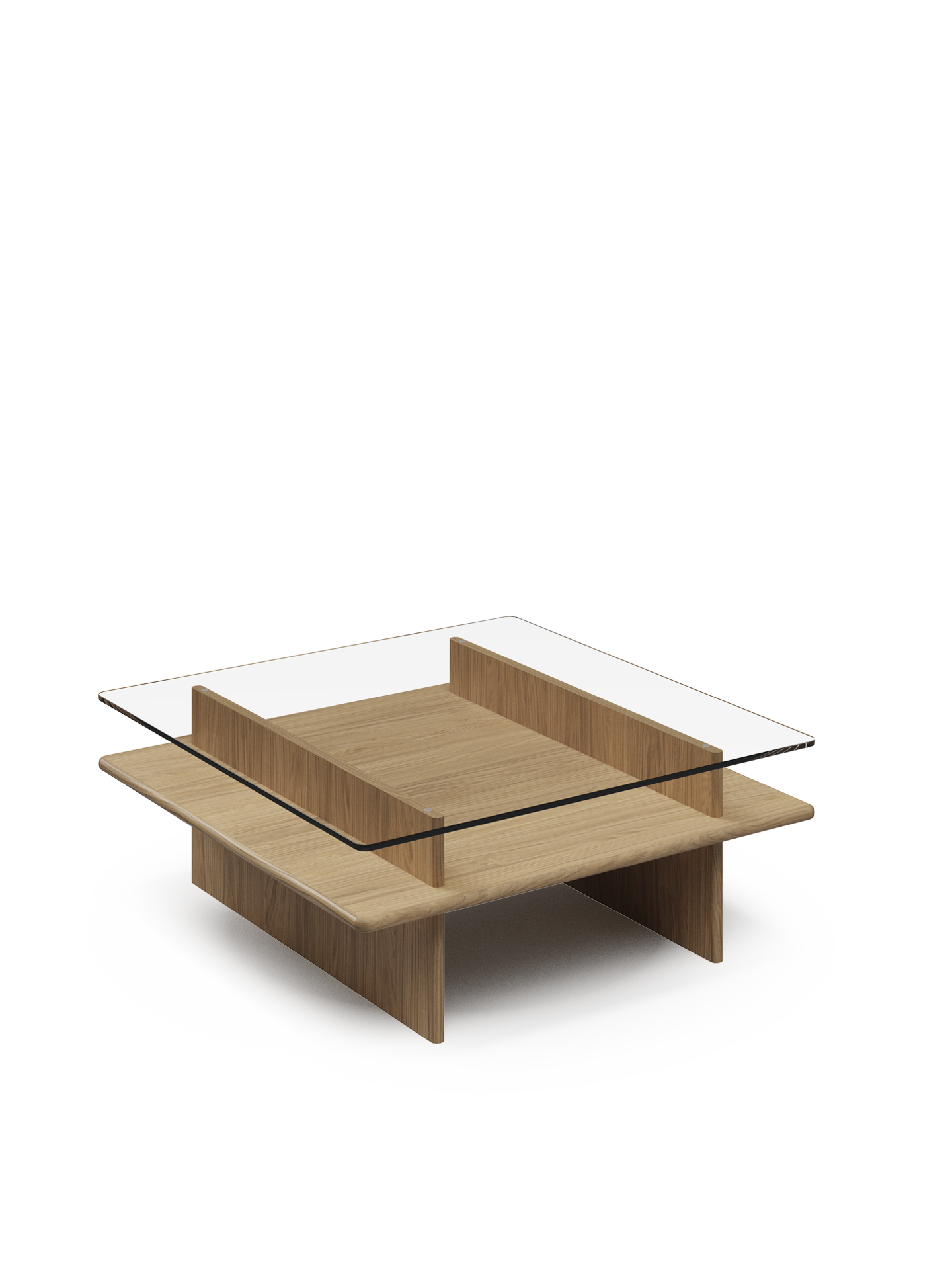A design dialogue with Magnus Pettersen
We sat down with designer Magnus Pettersen - the creative mind behind our Kimono and Parallel tables - to talk about his approach to design. From the way ideas take shape in his sketchbook to his belief in timeless forms and natural materials, Magnus shares how he develops pieces that are both beautiful and made to last.
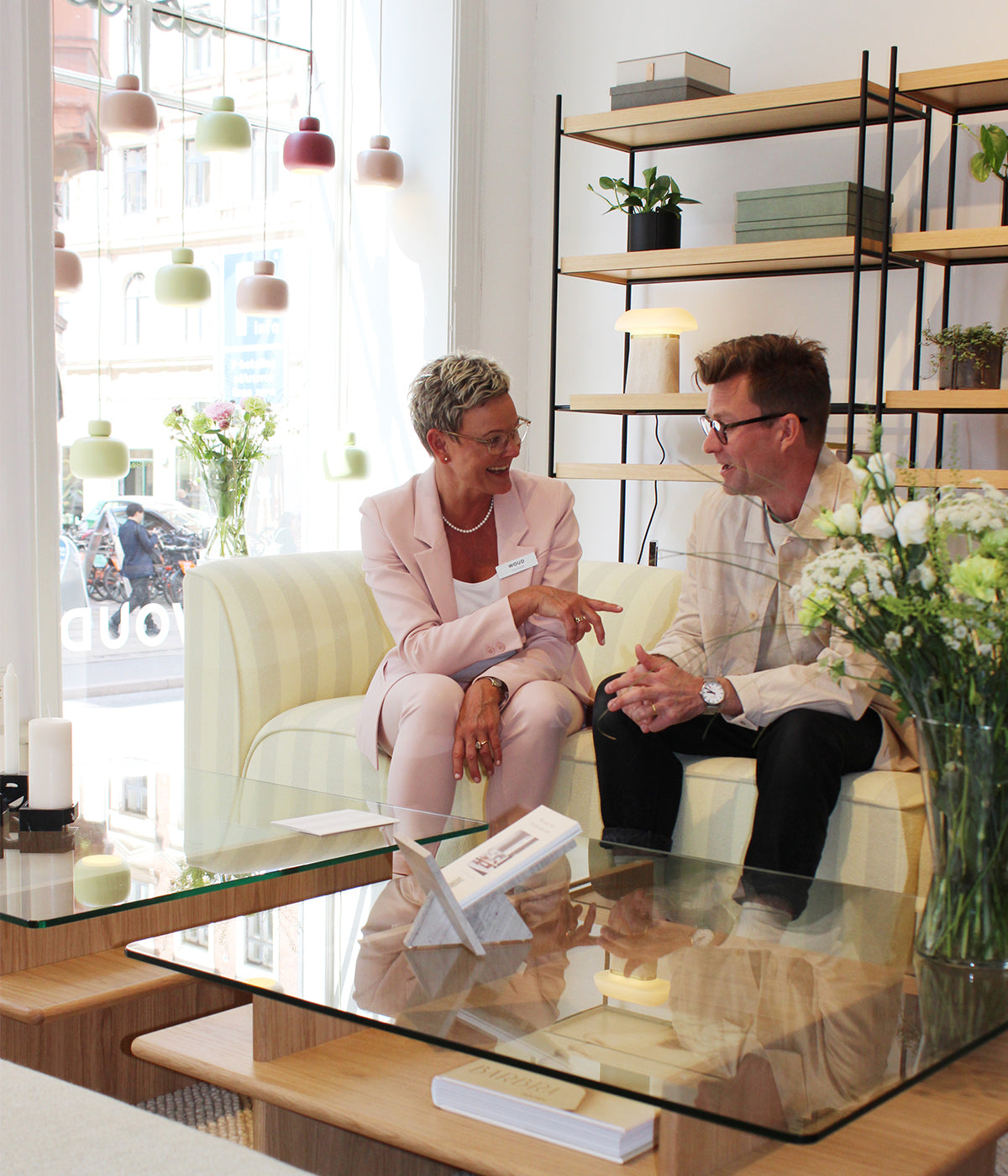
What first sparked your interest in designing furniture?
It’s hard to pinpoint the exact moment it began. Looking back, I think my interest grew gradually over time, while growing up. My grandfather lived next door and ran a furniture store, with a workshop in the basement. He would mend pieces for his customers there, and when my grandparents looked after me, I would spend hours in the shop, watching my grandfather work, surrounded by the scent of fresh sawdust.
Because of that, my parents have always valued and invested in well-made furniture. It was simply part of our home. Growing up surrounded by it, I came to see furniture not just as things you use every day, but as objects that, when made well, can last a lifetime.
Good design is when…
For me, good design comes down to three things - though not in any particular order. First, it has to be beautiful or aesthetically pleasing. Second, it needs to be functional and serve a clear purpose. And lastly, it must be well made, using the most appropriate - and ideally the best - materials for that particular object and its design.
What does the idea of ‘timeless design’ mean to you?
Timeless design is not always easy to put into words. For me, it is about creating something that feels naturally at home, no matter the setting. If a piece can live just as effortlessly in a 200-year-old country house in the English countryside as it can in a converted industrial loft in New York, then it has that timeless quality. It is the kind of design that transcends trends and speaks to something more enduring.
How would you describe the essence of your design language?
For me, it is about creating timeless objects with character that forge a lasting connection with the user. Pieces that people can connect with and keep for years.
I think about every detail with genuine care, from the overall form to the smallest element, making sure it serves both beauty and function. A design should feel good to live with, not just to look at.
Where do you seek inspiration?
I genuinely feel that inspiration can come from anywhere, as long as you are open to noticing it. Always keep your eyes open. Sometimes, often, it is small, random, unexpected details you notice in the world around you. Travelling is a big source for me; when I’m away from home, I tend to explore more, look closer, and spot things I might otherwise overlook. It could be something imperfect that catches my eye and sparks an idea. I also find inspiration in thinking about how things are made. Manufacturing processes and the qualities of different materials can often lead to new concepts or details in my work.
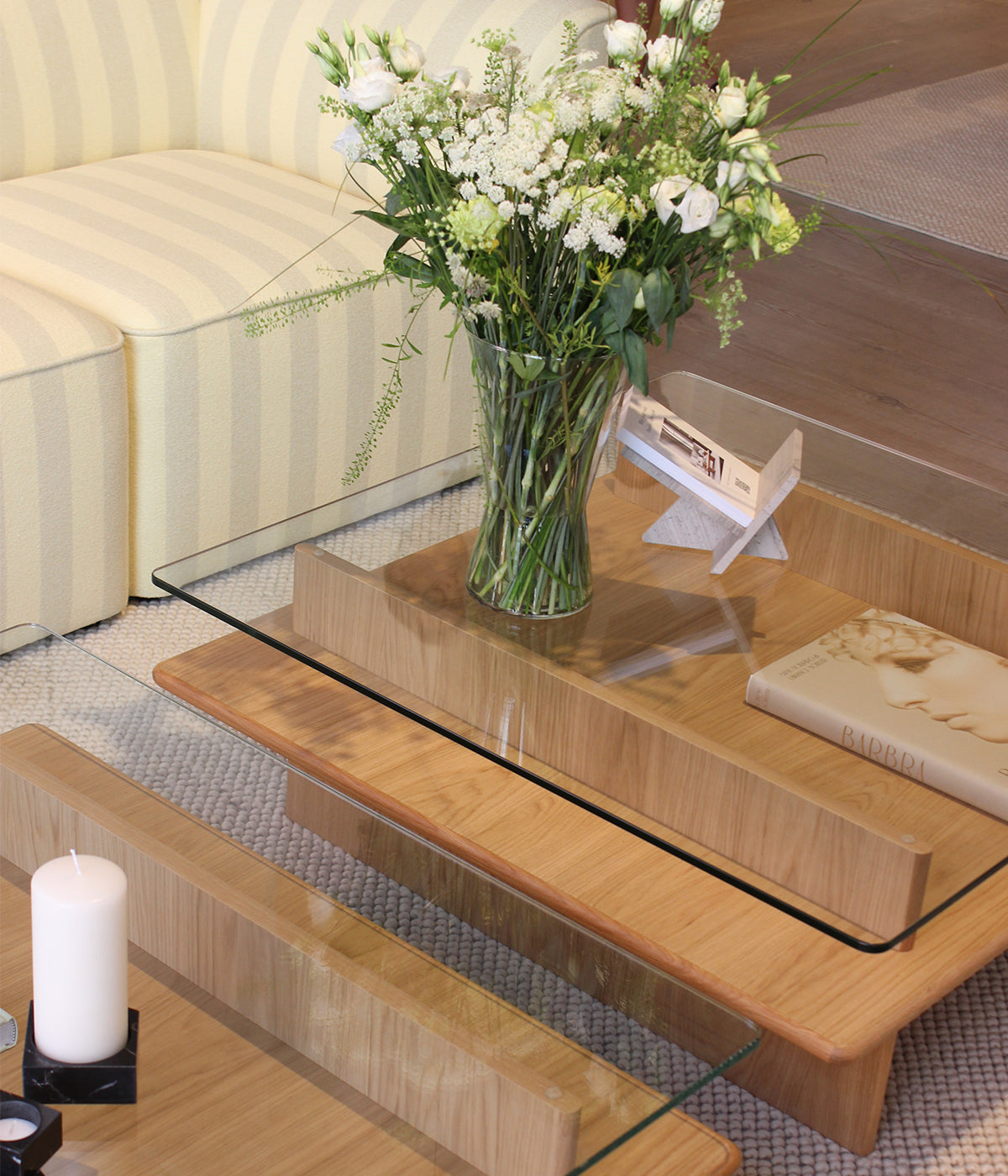
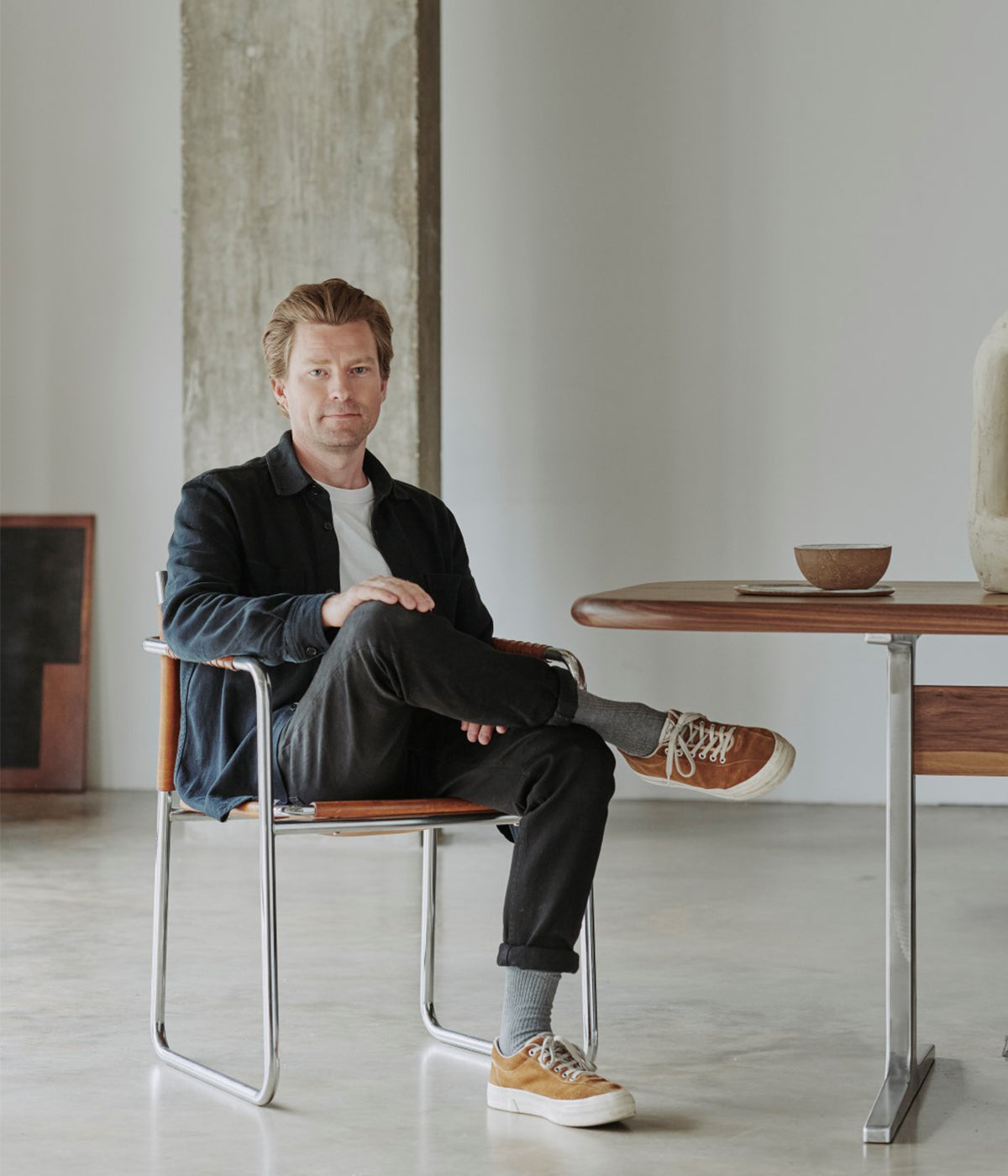
Which part of the design process feels most like ‘home’ to you?
My work usually begins with an idea, so sketching is where I feel most at home. It is the stage where concepts start to take shape on paper before they become something you can touch. From there, prototyping and sampling are essential. Seeing a design in full scale and real materials tells you far more than drawings ever could. Even before that, I like to make quick mockups, sometimes from cardboard, sometimes 3D-printed. They may be rough and flimsy, but they help me understand proportions and details early on, making the rest of the process smoother and more focused.
How would you describe your own home?
We live in a typical terraced house in Bristol, built in the late 1800s. We have kept many of the old, original features, while stripping things back a little to let the rooms breathe - both in terms of furniture and lighting. Not surprisingly, our home is furnished with a blend of my own design prototypes, unique one-off pieces we have had made, and selected production designs from various brands. We have also collected plenty of old, found and vintage pieces over the years, each with its own little story. The styles might vary, but because almost everything is made from natural materials, it all feels connected and works together.
Are there certain materials, colours, or forms you always return to?
As my own home reflects, I always seem to come back to natural materials. They have an honesty to them, a texture, warmth, and variation that man-made materials rarely match. Whether it is wood, stone, or natural fibres, they age gracefully and add character over time, which I adore.
Any particular design movements or eras that interest you right now?
At the moment, I am especially drawn to the Arts & Crafts movement. It is a reaction against industrial mass production, celebrating the value of craftsmanship, natural materials, and simple forms. I connect with its belief that everyday objects should be both beautiful and well-made, an approach that still feels deeply relevant in design today.
